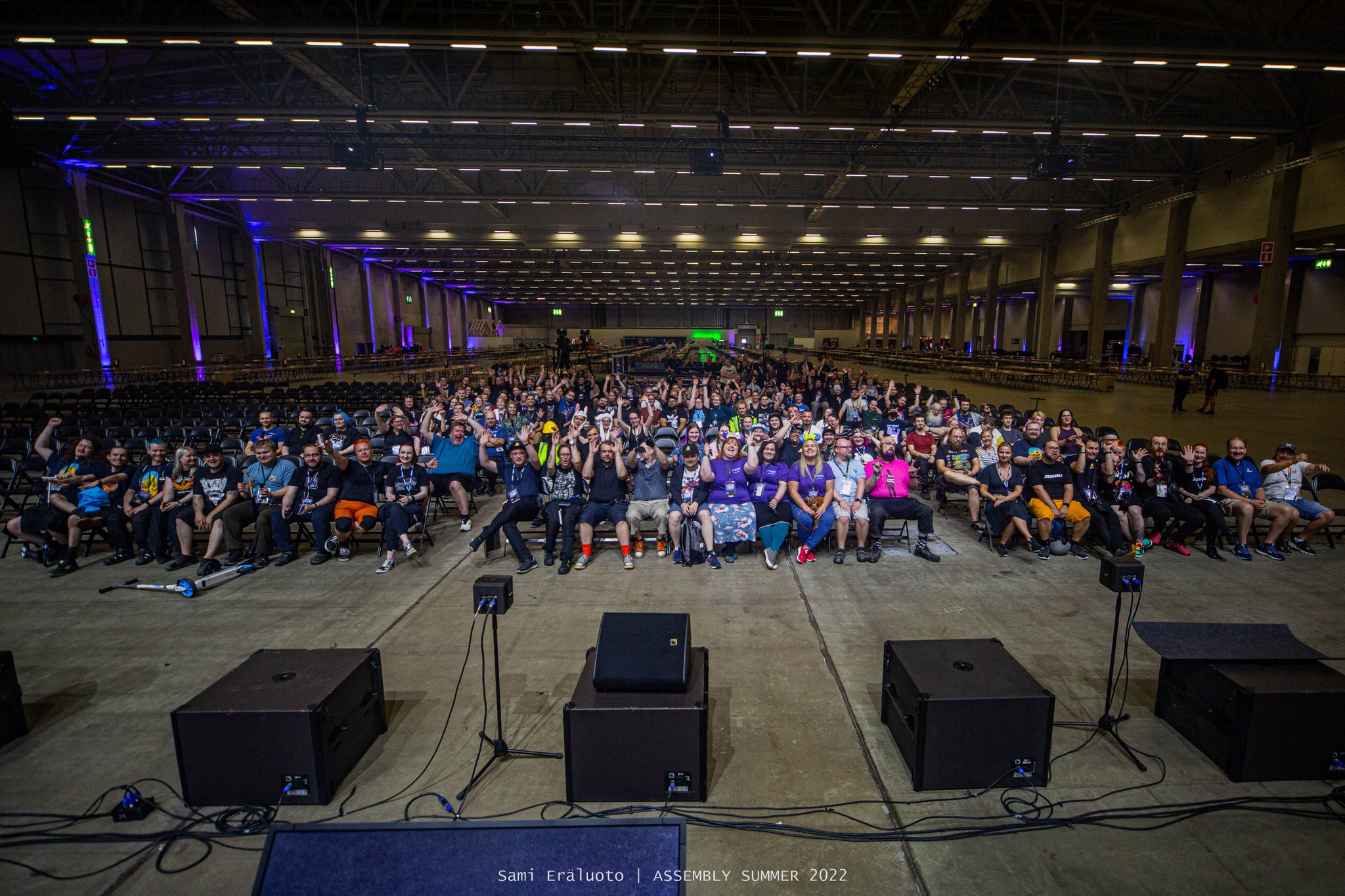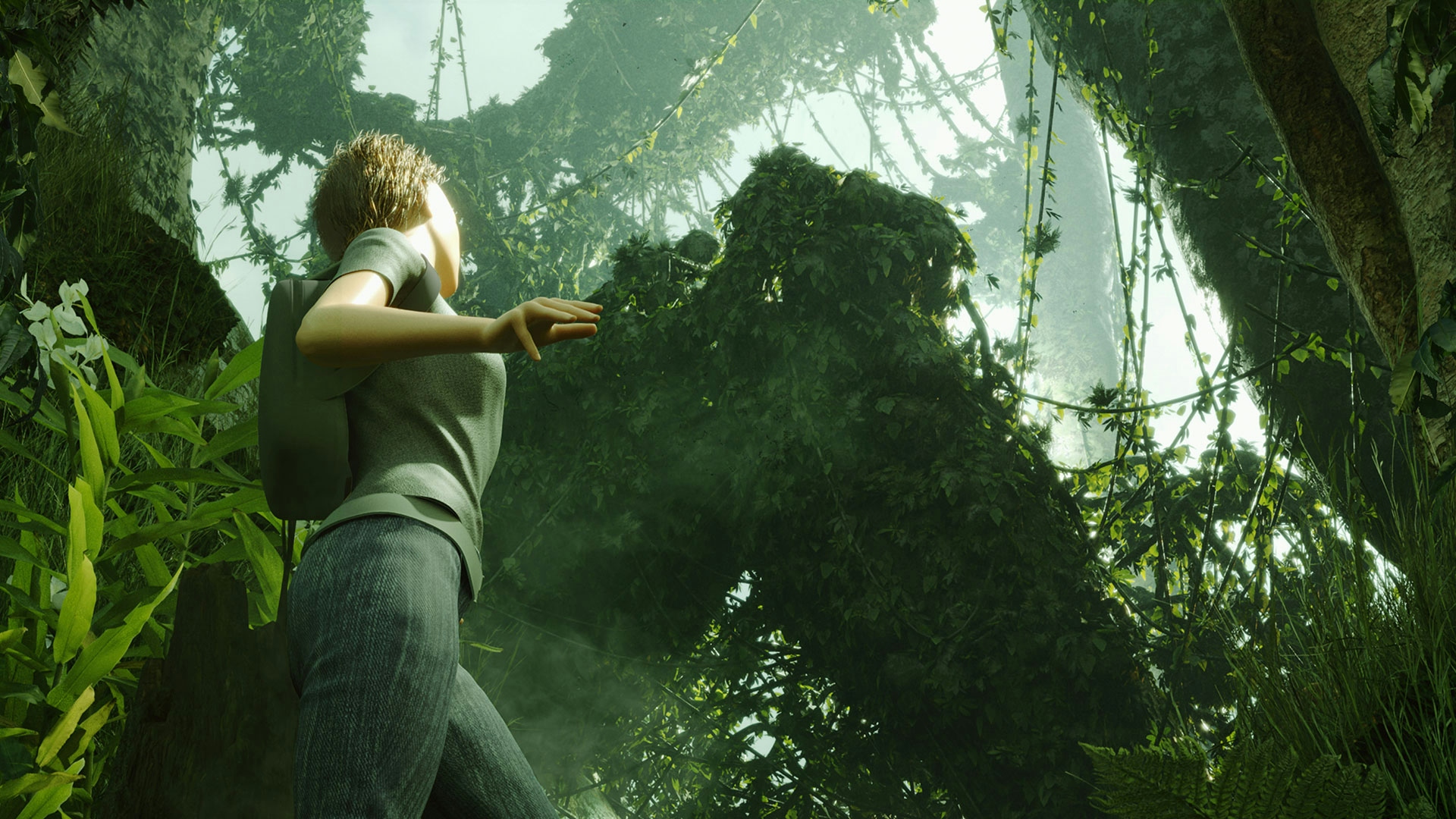Organizers – Join the fun side!

Participation in Assembly Organizing is an opportunity to learn organizing, project management, hone one’s interpersonal and team member competencies and, of course, to apply and learn skills in production and digital tools. You’ll be working in a very advanced and large-scale computer networking environment that has a warm and long-standing community consisting of both official Assembly employees and volunteers.
Information about Assembly Organizing and crews can be found here.
We are always recruiting dedicated and skilled individuals with a keen knowledge and/or interest in technology, digital tools and platforms, demoscene and all things related to LAN parties!
Please note that you need to be 18 or over to participate as a volunteer!
In order to apply as volunteer, send an application to the address given as instructed in the “apply for work” -section below. You can apply either in Finnish or in English.
Being an organizer
First of all, being an organizer is volunteer work. You have to have the motivation for being an organizer as otherwise you will not enjoy it. The work will be hard at times, you will be tired and you’d rather be somewhere else relaxing and having a Coca-Cola. If you want to be an organizer, you will have to be able to get past those difficult moments. To quote an ages old proverb: “When the going gets tough, the tough get going”.
If you got the motivation, then the whole world of ASSEMBLY Organizing is open to you. We believe that hard working people with the right attitude can learn and master almost anything.
The work you do depends a lot on the job. The tasks in LiveCrew are different to those in the Infodesk. Still, the basic outline is the same:
1. Participating in the preparations (9 – 3 months before the event)
Preparations for the next ASSEMBLY event begin almost immediately after the previous event has ended (and sometimes even before). The preparations typically start after the previous year has ended and there is 7 full months left before the next ASSEMBLY. During the preparation phase roughly half of the organizing team gets involved with different kinds of preparation tasks, such as producing programs for AssemblyTV, planning the Party Lan, defining compo rules, planning the party schedule, recruiting speakers to the seminars and updating the web site (just to name a few activities).
Typically in the preparation phase an organizer needs to put in a 2 – 4 of hours per week. Function heads and other key organizers put in at least double/triple amount of work. (Note: the amount of work differs greatly from job to job, even within the same team)
2. Participating in the preparations #2 (3 – 0,5 months before the event)
As the event gets closer the preparations get more intense. Everything needed for the event needs to be planned, material and resources must be acquired as the deadlines keep on getting closer and closer.
Almost every organizer has to work during the second preparation phase. Typical work amount can be 2 – 6 hours a week, but also as high as 10 – 14 hours per week. The organizers in the Core team put in around 20-30 hours per week. (Note: the amounts of work differ greatly from job to job in even within the same team)
3. Building the event (2 weeks before the event – party starting date)
This is when everything starts to actualize. Final preparations and planning will be done. Actual building of the event begins 2 – 4 days before the event begins. Majority of the organizing team works at the party place setting everything up during the last two days before the event. This means that most of the personnel have come to Helsinki and are possibly staying overnight at the party place.
During the last two days almost every organizer needs to put in at least 6-8 hours per day.
4. Event (four days (three for winter), Thursday to Sunday)
Assembly Summer begins on Thursday and ends on Sunday. Most of the different functions (e.g. LiveCrew, Infodesk, NetCrew, Security) work a three shifts, so an organizer is on duty for 8 hours and then possibly has 16 hours of free time. However, if things get intense, free time might decrease significantly. For example, if there is a major network problem, the whole NetCrew (on-duty and off-duty) personnel will pitch in until the problem is solved.
During the event you should expect to be on-duty between 8-12 hours per day.
5. Deconstruction (Sunday and Monday)
The deconstruction of the event begins on early Sunday morning (or late Saturday). Internal functions that have already done all their work (e.g. CompoCrew) start to tidy up the facilities and to pack up loaned equipment. Actual deconstruction starts on Sunday immediately after the party is over. The majority of the deconstruction (e.g. returning equipment, deconstructing the Party Net) typically is accomplished during Sunday evening. After this, majority of the organizing team is off duty. Typically organizers can leave for home around 21 – 22 o’clock on Sunday evening.
A few organizers will continue the deconstruction during Monday.
Then it’s over! The last thing after the party is to write down improvement suggestions, process visitor feedback and prepare for the GREAT fiesta called the After Party/Kaato.
Benefits
The key benefits for Assembly organizers are listed below
- ASSEMBLY crew t-shirt
- Free, warm lunch every day and good discounts on food from the restaurants at the event place
- Crew only -sleeping area
- The ASSEMBLY After Party (el grande fiesta!)
- Minor salary to cover expenses (only for persons in demanding jobs / with a lot of responsibility area, e.g. security and the function heads)
What else can AsmOrg offer you?
In addition to the tangible benefits, being a member of ASSEMBLY Organizing offers you:
- Great feeling of succeeding in a very demanding task – the task of organizing ASSEMBLY
- Membership in a superb community of young, talented people – the ASSEMBLY Organizing team
- An opportunity to learn and improve your technical skills (e.g. PC networking, programming, audio & video production) and invaluable personal competencies such as team leadership, team membership, language skills, coping with stress, interpersonal and team communication, project management, organizing and production competencies
- A possibility to take on more demanding responsibilities beginning on your second year in the team (e.g. organizing a compo, leading a team)
- An unique opportunity to work and have fun at the same time! Organizing ASSEMBLY is hard work but it is also great fun!
Responsibilities
- Participating in event preparations as instructed by your function head (between 2 – 4 hours per week)
- Participating in ASSEMBLY Organizing team meetings
- Taking responsibility for your own work and doing your best to accomplish your tasks
- Being flexible and helping others if they need your assistance
- Working during the ASSEMBLY building, event and deconstruction times. This can be hard work and take up to 8 – 12 hours per day.
- You must be present at the ASSEMBLY event and preferably during the building days
Note: You must be at least 18 years old.
Note 2: Most of our team members are Finnish, but this is not a requirement.
Apply for work
WE ARE NO LONGER ACCEPTING NEW APPLICATIONS FOR WINTER 2023 VOLUNTEERS. KEEP AN EYE OUT FOR CHANGES OR APPLY FOR THE NEXT EVENT!
To apply, send a free form application by email to job-contact@assembly.org
In the application, please state at least the following things:
Your personal information
- full name
- nickname (handle) and possible (demoscene) group affiliation
- contact info: phone number and email address
- age
Your background & skills
- previous demo or lan parties you have attended (e.g. which ASSEMBLY events)
- involvement in demoscene or other communities
- other volunteer work you have done previously (e.g. contributing to a website, organizing a smaller LAN party)
- hobbies and interests (e.g. electronics, video production, programming)
- your skills and competencies. Please pay extra attention to this section and tell us what you are good at
The job you are applying for
- specify both the job you most would like to have and also your second alternative
- if you are sending an open application, please state your preferences regarding the job
- state why you believe you would be well suited for the job
